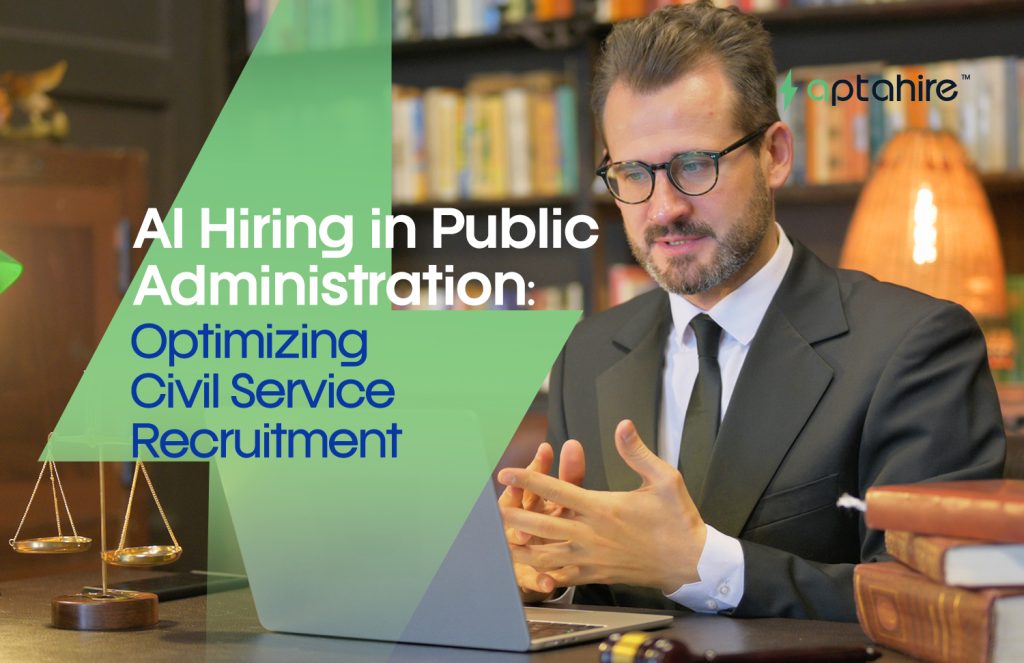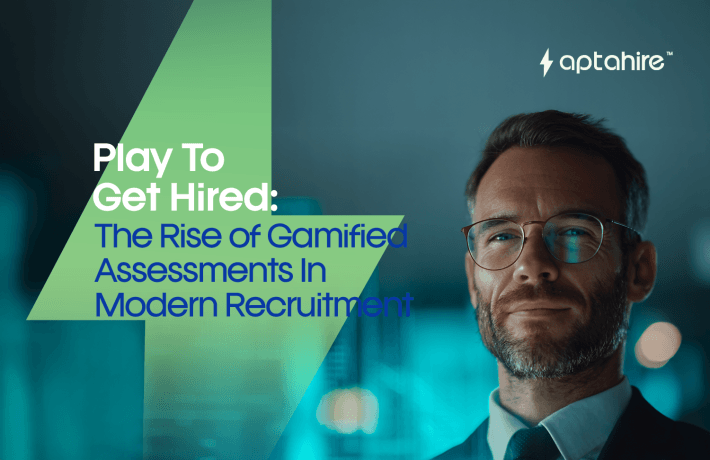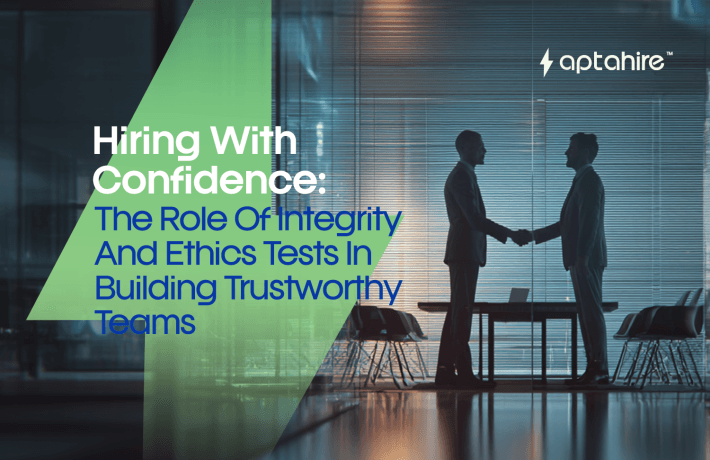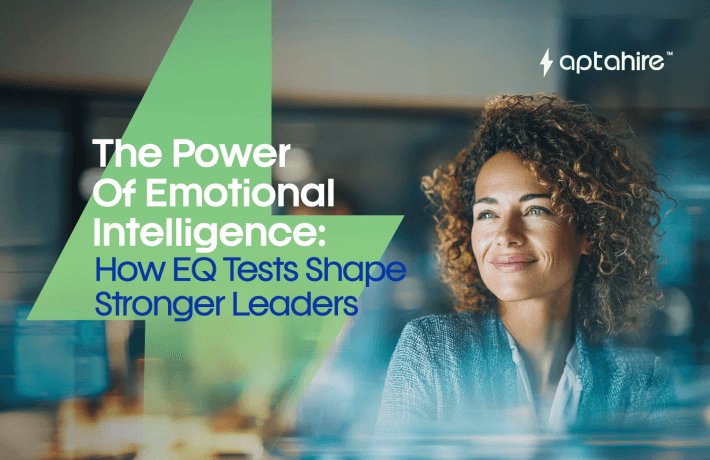AI Hiring in Public Administration: Optimizing Civil Service Recruitment

Introduction
If you’ve ever dealt with public sector hiring; either as a recruiter, a government official, or even a candidate, you probably know the process can be… painfully slow. Think months-long application cycles, stacks of paperwork, strict regulations, and a serious shortage of tech innovation.
Governments are tasked with recruiting individuals who uphold public trust, deliver critical services, and make big decisions that impact millions. But here’s the dilemma: finding the right talent quickly, fairly, and efficiently in a bureaucratic setup is incredibly tough.
That’s where AI hiring comes in. And no, this isn’t about robots replacing humans in decision-making. It’s about using artificial intelligence as a tool to make recruitment smarter, faster, and more transparent, especially for civil service roles in public administration.
In this blog, we’ll dive deep into how AI is revolutionizing public sector hiring, the benefits it brings, and how governments can implement it responsibly.
Why Traditional Civil Service Hiring Needs a Rethink
Public sector recruitment has always been guided by a set of values: merit, equity, transparency, and accountability. While these are essential, the execution is often bogged down by:
- Time-consuming processes (think multiple rounds, physical paperwork, and long vetting times)
- Manual screening of thousands of applications for a single position
- Limited capacity to assess behavioral traits, integrity, or long-term suitability
- Lack of agility to respond to sudden demands (e.g., health emergencies, new policy initiatives)
This isn’t just inconvenient, it impacts the government’s ability to deliver services effectively and build future-ready teams.
Enter AI: The Digital Ally for Public Sector Recruiters
Now, imagine if civil service hiring could become:
- Faster, without compromising on quality
- Fairer, with reduced human bias
- More data-driven, with predictive insights
- Scalable, for both high-volume and niche roles
That’s exactly what AI makes possible.
Let’s explore how.
How AI Is Optimizing Civil Service Recruitment
1. Automated Screening for Speed & Accuracy
AI-powered Applicant Tracking Systems (ATS) can instantly scan thousands of applications, extracting relevant skills, qualifications, and past experience.
Unlike human reviewers, AI doesn’t suffer from fatigue or unconscious bias, and it flags candidates based on pre-set, merit-based criteria. This dramatically cuts shortlisting time while increasing consistency.
Example: The U.S. Office of Personnel Management piloted automated resume evaluation tools in 2023 to assist with federal hiring, reducing screening time by 60%.
2. Behavioral Assessments & Integrity Checks
Civil service isn’t just about credentials; it’s about values, emotional intelligence, and ethical behavior.
AI assessments can evaluate:
- Problem-solving ability
- Situational judgment
- Decision-making under stress
- Value alignment (e.g., commitment to fairness, rule of law)
These tools give hiring managers deeper insights into whether a candidate is a good long-term fit, not just on paper.
3. Bias Mitigation Through Algorithmic Transparency
One of the biggest criticisms of AI is the risk of bias. Ironically, in recruitment, AI can help reduce bias when built correctly.
By anonymizing profiles (removing gender, age, name, and ethnicity) and focusing only on role-related metrics, AI enables fairer, more equitable hiring. Plus, AI platforms can be audited regularly for compliance and ethics.
Did you know? Estonia’s government uses AI in several public administration functions, including talent forecasting and fair candidate evaluation.
4. Video Interviewing with AI Insights
AI-powered video interviews don’t just capture what candidates say, they analyze how they say it.
Facial expression recognition, tone of voice, confidence levels, and reaction times can offer clues about:
- Communication skills
- Emotional regulation
- Authenticity
While this isn’t the final decision-maker, it augments human judgment, especially in preliminary rounds.
5. Predictive Analytics for Workforce Planning
AI doesn’t stop after hiring. It also helps governments forecast talent needs, anticipate shortages, and create succession pipelines.
Imagine knowing 6 months ahead that your department will face a skills gap in cybersecurity or policy development, and having an AI-suggested talent pool ready to go.
Singapore’s Civil Service uses AI-driven workforce planning tools to project future staffing needs across departments.
Benefits of AI Hiring in Public Administration
Let’s break it down:
| Benefit | Impact on Public Sector Hiring |
| Faster Process | Cuts down recruitment timelines by up to 70% |
| Better Fit | Matches candidates based on skills + behavior |
| More Fairness | Reduces bias, improves merit-based decisions |
| Improved Engagement | Automates updates, improves candidate experience |
| Long-Term Planning | Helps build future-ready, resilient teams |
In short, AI helps public administration move from reactive hiring to strategic talent acquisition.
Common Concerns (And How to Address Them)
“Will AI make the process less transparent?”
Only if it’s not implemented well. Responsible AI hiring platforms offer explainable algorithms, audit trails, and clear decision criteria that align with public hiring laws.
“What if the AI makes a mistake?”
AI is not a replacement for human judgment. It’s a decision-support tool. Recruiters still make the final call, and candidates can appeal decisions if needed.
“How do we ensure fairness and compliance?”
Governments can work with AI vendors that meet regulatory, ethical, and accessibility standards, while also testing tools for fairness across gender, race, and disability inclusion.
Steps to Implement AI Hiring in Public Administration
- Audit your current hiring process – Where are the delays and bottlenecks?
- Set clear objectives – Speed? Fairness? Volume? Transparency?
- Choose ethical, transparent AI vendors – Prioritize explainability and compliance.
- Train HR teams – Help them trust and work with the AI.
- Pilot, review, scale – Start small, learn, and roll out across departments.
Final Thoughts: Smarter Civil Service Starts with Smarter Hiring
AI hiring isn’t a futuristic fantasy, it’s already happening in leading governments around the world. For public administration, it offers a rare chance to modernize, humanize, and optimize recruitment at once.
Yes, civil service roles demand high standards. But that doesn’t mean the process has to be slow, outdated, or biased. With AI as an ally, governments can attract top talent, reflect the diversity of the populations they serve, and build a future-proof, efficient public workforce.
And that’s not just good for HR, it’s good for governance.
FAQs
1. What is AI hiring in the public sector?
AI hiring uses technology to automate and improve recruitment processes like screening, assessments, and scheduling for civil service and public administration roles.
2. Is AI hiring compliant with public service regulations?
Yes, if implemented with transparency, fairness, and adherence to data privacy and anti-discrimination laws.
3. Can AI reduce hiring time for government jobs?
Absolutely. AI tools can reduce recruitment timelines by up to 60–70%, especially in screening and interview scheduling phases.
4. Does AI hiring remove human decision-making?
No. AI supports recruiters by offering insights and automating tasks, but final hiring decisions remain with human HR teams.
5. Is AI hiring fair and unbiased?
It can be, if designed with inclusive data and regularly audited to eliminate systemic bias.
6. What types of roles can AI help recruit in public administration?
Everything from IT and healthcare professionals to policy advisors, finance experts, and frontline administrative staff.
7. Are there real-world examples of governments using AI hiring?
Yes; Singapore, Estonia, and some U.S. federal agencies have already integrated AI into their civil service recruitment systems.
8. How does AI help improve diversity in hiring?
AI can anonymize applications and use skill-based evaluations to reduce unconscious bias in hiring decisions.
9. Is AI hiring expensive for public sector use?
While there’s an upfront investment, AI hiring tools often lead to significant cost savings through reduced time-to-fill and improved hiring accuracy.
10. How can governments start with AI hiring?
Begin with a pilot project in one department, choose a trusted vendor, involve HR teams in training, and scale gradually based on outcomes.



